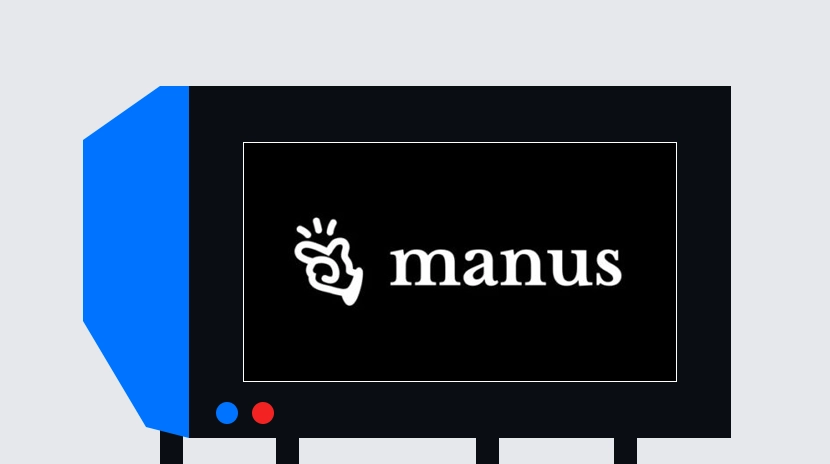ما هو بوليفلو
مقدمة
بولي فلو هو بروتوكول معماري مدفوع بالذكاء الاصطناعي مصمم لعمليات الأصول الرقمية. يعد PID (معرف الدفع Web3) حلاً للمصادقة الهوية المركزية اللامركزية تم بناؤه باستخدام دلائل الصفر المعرفة. من خلال جمع التصميم المعماري مع هياكل البيانات المركزة على الذكاء الاصطناعي، يهدف بولي فلو إلى توفير بنية أساسية آمنة وفعالة من حيث التكلفة وتتوافق مع اللوائح بشكل كامل للشركاء للاستفادة الكاملة من PayFi وعمليات الأصول.
خلفية التمويل

خلفية التمويل (مصدر الصورةhttps://www.rootdata.com/Projects/detail/Polyflow?k=MTI1OTc%3D)
وفقًا لـ RootData، تشمل مستثمري PolyFlow Hash Global و ZC Capital. ومع ذلك، لم يتم الكشف عن معلومات مفصلة بخصوص تاريخ التمويل والمبلغ حتى الآن بشكل عام.
الفريق الأساسي

وفقًا لموقع الويب الرسمي لـ PolyFlow، يتكون الفريق الأساسي من مؤسس كو- Raymond Qu، مؤسس Shine Sha، مدير مالي Chuck Zhang، مدير تكنولوجيا المعلومات Peter Chen، ومدير التسويق Fabio Toffani. بينهم، ريموند هو أيضًا مؤسس شركات الدفع Huiyuantong و Airswift، مما يجلب خبرة وموارد كبيرة في صناعة الدفع.
أهمية بوليفلو
في نموذج العمل الحالي للدفع بالعملات المشفرة، تعمل معظم مزودي حلول الدفع ومزودي خدمات إدارة الأصول بشكل أساسي بشكل مركزي. تفتقر هذه الكيانات المركزية إلى الشفافية، ويمكن أن يؤدي الخطر بين الأطراف بسهولة إلى نقاط فشل فردية. علاوة على ذلك، يقدم اتخاذ القرارات المركزي مخاطر ودائعية واسعة الانتشار. هذه المشكلات أثرت بشكل كبير على الصناعة، مما زاد من تعقيد المعاملات بشكل كبير وأثار مخاوف من الجهات التنظيمية:
- الحضانة المركزية: تعرض المؤسسات التي تحمل المفاتيح الخاصة المتعلقة بالمستخدمين أصول المستخدم لمخاطر الاحتجاز الكبيرة.
- التسوية بالعملات الورقية التقليدية: نموذج الدفع الرقمي الحالي هو انتقالي ويجب أن يتكامل مع أنظمة التسوية بالعملات الورقية التقليدية، مما سيؤدي إلى زيادة التكاليف وتقليل الكفاءة.
- نقاط عمياء تنظيمية: الكيانات المركزية العميقة، جنبًا إلى جنب مع إطار قانوني ناشئ للعملات المشفرة، تمثل تحديات رئيسية للجهات التنظيمية.
- قيود الخدمة: غالبًا ما تدعم المؤسسات الفردية فقط فئات محدودة من خدمات الدفع بالعملات الرقمية، مما يجعل من الصعب تلبية متطلبات المستخدمين المتنوعة.
- عدم التوافق في ديفي: تتعثر المؤسسات المركزية في التكامل بفعالية مع نظام الديفي، مما يعيق انتشار اعتماد PayFi بشكل واسع.
الميزات الأساسية
أدى دمج المدفوعات الرقمية والتمويل اللامركزي إلى ظهور PayFi. يسعى PayFi إلى بنية تحتية جديدة لدعم تنفيذه ومعالجة القضايا التنظيمية المعقدة. وقد اعتبر PolyFlow واحدًا من البروتوكولات الرائدة المصممة لبناء البنية التحتية المالية لـ PayFi.
تدور مفهوم PolyFlow الأساسي حول التصميم القابل للتعديل، مقدمًا عنصرين رئيسيين: معرف الدفع (PID) وبركة السيولة في الدفع (PLP). تفكك هذه العناصر تدفق معلومات المعاملات والأموال، التي كانت تسيطر عليها المؤسسات المركزية سابقًا، مع فتح قيمتها. من خلال تحقيق ذلك بطريقة لامركزية، يعزز PolyFlow الامتثال التنظيمي ويقلل من المخاطر الودائعية عبر عملية العملية. بالإضافة إلى ذلك، يستفيد PolyFlow من وظائف سلسلة الكتل للتكامل مع نظام DeFi، معززًا اعتماد تطبيقات PayFi على نطاق واسع.

حالات استخدام تقنية البلوكشين لـ PolyFlow تشمل:
- طريق Gate.ioway أبسط لتحقيق اعتماد واسع النطاق للعملات المشفرة
- الحلول غير الوديعية تضمن الامتثال
- حماية الخصوصية من خلال تقنية ZK (المعرفة الصفرية)
- توليد الدخل ديفي من خلال توفير السيولة لعمليات الدفع
- طبقة PID الخاصة التي تسهل المعاملات متعددة الوظائف
- بركة سيولة متكاملة لتنفيذ التسوية
- تطبيقات متعددة الوظائف توسع مجموعة المنتجات والميزات
المقارنة مع مؤسسات الدفع التقليدية:

-
1. معرف الدفع (PID)

PID هو هوية لامركزية مرتبطة بمعلومات KYC/KYB المشفرة لحماية خصوصية المستخدم، مرتبطة بمعلومات KYC/KYB المشفرة لحماية خصوصية المستخدم، مرتبطة بمعلومات KYC/KYB المشفرة لحماية خصوصية المستخدم، مرتبطة بمعلومات KYC/KYB المشفرة لحماية خصوصية المستخدم، مما يمكن المستخدمين من الحصول على أوراق اعتماد قابلة للتحقق عبر المنصات المتعددة. يمكن أن يتيح ميزات التالية:
- يمكن أن يتضمن PID الوصول إلى معلومات التحقق من منصات مختلفة، والتي يمكن مشاركتها بسهولة عبر رموز الاستجابة السريعة. يُبسط هذا الأسلوب المنظم للاعتراف بالهوية وإدارة المعاملات عمليات التحقق من الشريك بينما يحافظ على التوافق مع نظام البنية التحتية المالية اللامركزية. ومن الأهمية بمكان أنه يربط بين حاجز المعلومات الذي بنته المؤسسات المركزية في السابق من خلال الاتصال بنظام هوية مفتوح ولامركزي، مما يمنح الطاقة لكل من النظام المالي التقليدي ونظام البيئة المالية اللامركزية.
- حماية الخصوصية: يستفيد PID من تقنيات مثل البراهين بدون معرفة لتحقيق التزامات مكافحة غسيل الأموال (AML) وتمويل الإرهاب (CTF) دون المساس بخصوصية المستخدم. هذا هو الشرط المسبق الحاسم للمستخدمين للتفاعل مع الأمور المالية التقليدية ونظام الديفي.
- سيادة البيانات: ينبع PID من فصل تدفق معلومات المعاملات. من جهة، يقوم بالإبلاغ عن تدفقات الأموال إلى السلطات التنظيمية لتلبية متطلبات الامتثال؛ من ناحية أخرى، يُعيد بيانات السلوك على السلسلة إلى المستخدمين الأفراد. يمكن للمستخدمين المساهمة بالبيانات الموسومة بـ PID لتحليل الذكاء الاصطناعي مقابل مكافآت وحوافز رمزية - وهو انحراف عن النموذج المركزي التقليدي حيث استفادت المؤسسات من استغلال مثل هذه البيانات. بالإضافة إلى ذلك، يلعب PID دورًا حيويًا في بناء أنظمة الائتمان على السلسلة.
ميزات بيد
أوراق اعتماد قابلة للتحقق
PID هو DID (معرف مركزي) الذي يوفر للمستخدمين معلومات هوية قابلة للتحقق مرتبطة بسمات الدفع. يمكن للمستخدمين الحصول على أوراق اعتماد قابلة للتحقق (VC) من منظمات شريك Polyflow أو من الواجهات البرمجية الرسمية لـ Polyflow من منصات مختلفة. يمكن ربط هذه الVCs بـ PID للمستخدم. يمكن لتطبيقات الطرف الثالث الوصول إلى هذه VCs من خلال PID للتحقق أو الثقة في عنوان PID.
رمز مقيد الروح (SBT)
يعمل الـ PID كرمز مرتبط بالروح، مما يعني أنه بمجرد أن يتم إنتاج PID وتعيينه، فإنه لا يمكن نقله. هذه الطبيعة المرتبطة بالروح تضمن فرادة الهوية التي تقف وراء PID.
نظام القسائم
نظرًا لطبيعة الروحية الملزمة لـ PID، تم تقديم نظام قسيمة لتعيين خصائص المعاملات لمشاريع DID التقليدية قبل أن يؤكد المستخدم عملة PID. القسيمة هي شكل آخر من PID؛ بمجرد أن يتم تشكيل PID، لا يمكن أن يحدث مزيد من التشكيل. يمكن نقل القسائم أو تداولها. يمكن استبدال القسائم بالـ PIDs وربطها بشكل دائم بعنوان محدد.
العديد من السلاسل
تم نشر PID الآن عبر عدة سلاسل، مما يتيح الطباعة عبر سلاسل متعددة. يمكن للمستخدمين التفاعل مع التطبيقات اللامركزية باستخدام PIDs مختلفة على سلاسل مختلفة. يمكن لتطبيقات اللامركزية أيضًا التحقق من أصالة المستخدمين والوصول إلى معلومات KYC الأساسية المرتبطة بـ PID الخاصة بهم.
نظام قائم على الحسابات
تقدم Polyflow نظامًا قائمًا على الحسابات لأجهزة الهوية الشخصية للمستخدمين، مما يتيح لهم ربط هويتهم الشخصية بحساب غير مرئي.
- تسجيل الدخول السريع: يمكن للمستخدمين تسجيل الدخول إلى حساب Polyflow الخاص بهم باستخدام أي محفظة مرتبطة برقم الهوية الشخصي.
- إدارة سهلة: يمكن للمستخدمين إدارة وعرض معرفاتهم متعددة السلاسل من لوحة تحكم شخصية موحدة ضمن نظام قائم على الحسابات.
- تجميع KYC: تم جمع معلومات التحقق من الهوية (KYC) من مؤسسات مختلفة أو مكونات إضافية ZeroKYC تحت حساب المستخدم للاستخدام عبر مختلف معرفات الشخص المعرفة (PIDs) على سلاسل مختلفة.
- التحقق من الهوية قابل للتكوين: يمكن للمستخدمين تكوين معلومات التحقق من الهوية المختلفة (مثل المحتوى المتغير، أو المستويات، أو المؤسسات) لكل معرف شخصي عبر سلاسل مختلفة لتلبية متطلبات الأمان للتفاعل مع تطبيقات اللامركزية على تلك السلاسل.
2. بركة سيولة الدفع (PLP)

بركة السيولة PolyFlow هي آلية توليد دخل حقًا تعتمد على الأداء الفعلي، وليست مبنية على التكهنات. يقوم PolyFlow ببناء عناوين عقود ذكية لتيسير المعاملات، مما يقضي على معالجي الطرف الثالث ويحتفظ برسوم المعالجة كإيرادات. تضمن بركة السيولة المدعومة بعقود ذكية والمستقلة تمامًا تحقيق إعمالية أكبر، وتقليل مخاطر الحضانة، وتكاليف الطرف الثالث المنخفضة.
عوائد الأصول الحقيقية (RWA) على السلسلة
يمكن اعتبار PLP منتج عائد DeFi خالي من المخاطر مناسبًا لإدارة تدفق النقد على السلسلة. هذا اختراق غير مسبوق، حيث أن نماذج العائد DeFi السابقة تحمل بشكل طبيعي مخاطر. على سبيل المثال، تكون المنتجات المالية القائمة على التبادلات اللامركزية دائمًا معرضة لخطر الخسارة غير الدائمة. على النقيض، قد تواجه منتجات الإقراض على السلسلة تقلبات في أسعار الأصول الرهنية — وهي مخاطر شائعة داخل النظام البيئي DeFi.
في سيناريوهات الدفع الحقيقية، يولد PLP دخلًا خاليًا من المخاطر مباشرة من رسوم المعاملات. على سبيل المثال، في بيئة بوابة الدفع، عندما يقوم المستهلكون بإجراء المدفوعات إلى عنوان عقد ذكي ضمن PLP، يمكن لمزودي السيولة كسب مكافآت الدفع عن طريق تسوية الأموال عندما يطلب التجار سحبًا مبكرًا.
الأهم من ذلك، هذه العملية خالية من المخاطر، والعائد يتم تحديده بواسطة نسبة بين أموال مقدمي السيولة وإجمالي حجم المعاملات. يمكن لـ PLP تقديم منتجات مالية ثابتة أو مرنة جذابة، تدعم تمويل سلسلة التوريد، وشبكات تسوية المحافظ، والعملات المستقرة، والتأمين، وتطبيقات مبتكرة أخرى ضمن نظام PayFi.
ميزات PLP
- صُنعت تلقائيًا بناءً على العقد، خزانة الأصول ذات الوصول غير المحظوظ.
- يعمل عملية تخصيص الخزانة الآلية على تعظيم إمكانية إعادة استخدام الخزانة واستغلال اللامركزية.
- الأموال تتمتع بالتحكم الكامل والحماية بواسطة العقود.
- يُعلم النظام غير المميز وينفذ الحالات.
- يتم تخزين الأصول في الخزن المركزية بينما يتم الحفاظ على سلامتها.
مشاركو النظام البيئي
- مشاريع ذات صلة بالدفع
يستخدم هذه المشاريع مباشرة بروتوكولنا، مدمجًا به لتمكين جمع الدفعات الرقمية والخدمات ذات الصلة. يتم توليد رسوم المعاملات أثناء استخدام PolyFlow. فيما بعد، ستتلقى هذه المشاريع pfToken التي تم بناؤها بواسطة البروتوكول. يجب أن تكون هذه المشاريع حاملي رمز PID وتلبي بعض متطلبات التحقق الإضافية لرمز PID. بالإضافة إلى ذلك، يجب عليها إنشاء عنوان محفظتها الخاصة في نظام PLP مسبقًا.
- تجار
التجار هم المستخدمون المباشرين لطريقة Gate.io. يستخدمون Gate.io لقبول المدفوعات الرقمية. كل تاجر لديه حسابه الخاص وحساب الأموال ضمن Gate.io. يمكنهم سحب الأموال من Gate.io واستخدام عنوان المحفظة المعين لاستقبال المدفوعات الرقمية.
- العملاء
العملاء هم المستخدمون المباشرين للتجار وهم مصدر طلبات تخصيص عناوين المحافظ عبر بوابة Gate.io. يتم التحقق من هوية العميل من قبل التاجر.
- مستخدمي Web3
يمكن لمستخدمي Web3 المشاركة في رهان السيولة لتوفير السيولة لاسترداد سريع ل pfUSDT والاستمتاع بحصة من رسوم المعاملات وإيرادات المنصة. يمكنهم أيضًا إجراء تبادلات سريعة بين pfUSDT و USDT من خلال بركة السيولة. بالبديل، يمكنهم رهان رموز حوكمة PolyFlow لكسب دخل المنصة.
تخصيص الرسوم
رسوم العمليات
عند كل إطلاق لعملة pfUSDT، يتكبد رسوم معاملة. الرسوم نسبية لكمية الإطلاق. يمكن تعديل معدل الرسوم الإجمالي بنسبة 0.5%، ولكن يجب أن تُقر لاحقًا أي تغييرات من خلال تفويض متعدد التوقيعات أو تصويت رمز الحوكمة. الرسم = X x 0.5%
توزيع الرسوم
- 0.25% يبقى في المحفظة كإيراد بروتوكول طبيعي.
- تُختَزَن 0.03% ك pfToken وتُودَع في خزينة PolyFlow.
- يتم ضرب 0.2 ٪ ك pfToken وتخصيصه لبركة رهن السيولة.
- 0.02% يتم ضربها ك pfToken ومكافأة للمستخدمين الذين يستدعون طرق التجميع
3. الرهن
تدعم عوائد خالية من المخاطر من خلال رسوم معالجة معاملات الدفع برنامج PolyFlow للتحصين. كل معاملة تولد رسم معالجة صغير، والذي يتم توزيعه بين المشاركين في برنامج التحصين.
مكافآت الحصة
- العائد الأصلي على الـ pfUSDT المحتفظ به في العقد: يشير هذا إلى العوائد التي تتم إنشاؤها من خلال الاحتفاظ بـ pfUSDT في العقد. قد تشمل مكافآت الحصة، الإيرادات التي تم إنشاؤها بواسطة البروتوكول، أو الفائدة المكتسبة.
- رسوم معاملات تبادل سريعة: الرسوم التي تنشأ عندما يستخدم المستخدمون ميزة التبادل السريع للعقد. سيتم تخصيص هذه الرسوم لحوض الإيرادات.
- رسوم منطق الأعمال الأساسي للبروتوكول: جزء من الرسوم التي تم توليدها من أنشطة البروتوكول الأساسية مثل إنشاء pfToken، وتجميع الأموال، أو الخدمات الأخرى التي يقدمها البروتوكول.
شراكة تجارية
أنشأت PolyFlow شراكات استراتيجية مع عدة مؤسسات عبر قطاعات مثل المدفوعات عبر الحدود وتمويل سلسلة التوريد وبنية تحتية للبلوكشين. فيما يلي ملخص للشركاء الرئيسيين وتفاصيل تعاونهم:
1. قطاع الدفع عبر الحدود
- NihaoPay: شراكة مع PolyFlow لدمج PayFi في نظام الدفع عبر الحدود الخاص بها، مما يعزز قدرات التجار العالمية.
- مجموعة فيرجو: شكلت شراكة مع بولي فلو لتعزيز نمو نظام PayFi في كندا.
2. قطاع تمويل سلسلة التوريد
- Pelago: تعاونت مع PolyFlow لتمكين الموردين بنجاح من الحصول على قروض بقيمة 300،000 دولار على السلسلة الكتلية عبر منصة Pelago على شبكة Stellar، مما دفع اعتماد تقنية البلوكتشين في تمويل سلسلة التوريد.
3. قطاع البنية التحتية للبلوكشين
- تدعم PolyFlow شبكة Ethereum، مما يعزز التوافق مع البروتوكول ويوسع نطاق تطبيقها.
- متكاملة مع PolyFlow لتوفير حلول سلسة ومنخفضة التكلفة للبلوكشين، مما يعزز تجربة المستخدم.
- طبقة الإكس: PolyFlow تدعم شبكة الإكس لتوسيع نظامها البيئي متعدد السلاسل.
- BEVM: متكامل مع PolyFlow لتعزيز توافق البروتوكول متعدد السلاسل.
- ثقة لابس: فتح الائتمان اللامركزي في PayFi.
بالإضافة إلى ذلك، تخطط PolyFlow لدمج النظم البيئية مثل سولانا و TON في المستقبل، مما يوسع نطاق تطبيقها عبر سلاسل كتل مختلفة.
المخاطر والفرص
1. التنافس السوقي
يواجه PolyFlow منافسة من مؤسسات التمويل التقليدي وبروتوكولات الدفع بالبلوكشين في قطاع الدفع اللامركزي. العمالقة المركزيون في مجال الدفع مثل Visa وMastercard وPayPal لديهم قواعد مستخدمين وشبكات دفع معمرة. بينما تقوم حلول الدفع بالبلوكشين مثل شبكة Lightning وStellar وRipple، ومجموعة متنوعة من الحلول Layer 2 (L2) بتعزيز الكفاءة وتقليل التكاليف أيضًا. لكي يبرز PolyFlow، يجب أن يعتمد على الابتكار التكنولوجي - مثل تكاليف المعاملات الأقل، وسرعات التسوية الأسرع، والمدفوعات القائمة على العقود الذكية - لجذب كل من المستخدمين والتجار.
2. التبعية التقنية
تعتمد عملية PolyFlow على البنية التحتية الأساسية لسلسلة الكتل، بما في ذلك شبكات البلوكشين الأساسية، والعقود الذكية، وتكنولوجيا التبادل بين السلاسل، والآلهة. قد تحتاج إلى العمل على شبكة إيثيريوم، أو سولانا، أو سلاسل عامة أخرى، مع التفاعل مع الآلهة اللامركزية وجسور التبادل بين السلاسل. بينما تعمل هذه التكنولوجيات على تحسين قابلية توسع البروتوكول وقابلية تشغيله مع البروتوكولات الأخرى، إلا أنها قد تعرض لمخاطر أمنية وقيود أداء. يمكن أن تؤدي قضايا مثل ازدحام الشبكة، ورسوم الغاز المفرطة، أو حوادث الاختراق إلى تقويض استقرار PolyFlow وتجربة المستخدم. لذلك، فإن تحسين البنية التحتية وضمان الأمان القوي أمران حاسمان للنجاح.
3. عدم وضوح التنظيم
بروتوكولات الدفع الخاصة بالبلوكتشين تواجه تحديات تنظيمية عبر مختلف الاختصاصات العالمية المختلفة. وتشمل هذه متطلبات معرفة العميل ومكافحة غسل الأموال، وامتثال العملات المستقرة، والمخاوف ذات الصلة بالأوراق المالية بشأن رموز الدفع، وقوانين الدفع عبر الحدود. على سبيل المثال، الولايات المتحدة والاتحاد الأوروبي يشددان على التنظيمات المتعلقة بالعملات المستقرة، بينما يحافظ اليابان وسنغافورة على موقف أكثر انفتاحا تجاه الدفع بالعملات المشفرة. يجب على PolyFlow تحقيق توازن بين خصوصية المستخدم وامتثال التنظيمات بين التكيف بمرونة مع تطور التنظيمات العالمية لضمان أن يظل شبكة الدفع الخاصة بها قانونية وقابلة للتوسع عالميًا.
الختام
يقدم بروتوكول PolyFlow حلا مبتكرا للدفع اللامركزي (DePay). في الوقت الحالي، تواجه المدفوعات اللامركزية العديد من التحديات: ارتفاع رسوم المعاملات، وعدم كفاية السيولة، وعدم اليقين التنظيمي، وضعف تجربة المستخدم. تقدم PolyFlow آليتين أساسيتين لمعالجة هذه المشكلات: معرف الدفع (PID) ومجمع سيولة الدفع (PLP). تتدفق معلومات الدفع المنفصلة هذه من تدفق الأموال ، مما يعزز شفافية المعاملات والامتثال مع الاستفادة من نظام DeFi البيئي لتعزيز السيولة. على عكس حلول DePay التقليدية مثل BTCPay Server أو MoonPay أو طرق الدفع القائمة على العملات المستقرة (مثل التسوية المباشرة USDC) ، يعزز PolyFlow إدارة أموال الدفع من خلال تمكين المستخدمين من كسب عوائد DeFi أثناء المعاملات وتوفير خيارات تسوية مرنة عبر السلسلة. تظهر هذه البنية المبتكرة وعدا كبيرا للمدفوعات العالمية ، وتسويات B2B ، وتكامل الدفع السلس داخل نظام Web3 البيئي.
المقالات ذات الصلة

أفضل 15 عملة رقمية تعتمد على الذكاء الاصطناعي للاستثمار في عام 2024

أي منصة تبني أفضل وكلاء الذكاء الاصطناعي؟ نختبر ChatGPT و Claude و Gemini وغيرها

مراجعة كاملة: كيف وُلِدَ مانوس؟

كل ما تحتاج إلى معرفته حول بروتوكول GT

نظرة عامة على أعلى 10 عملات MEME الذكاء الاصطناعي
